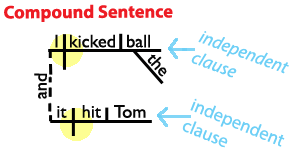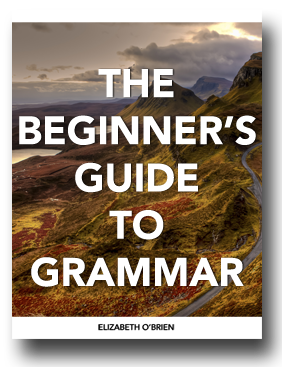📘 Download your free grammar guide here. 📘
📘 Download your free grammar guide here. 📘
What is a simple sentence?
What is a simple sentence?
- Home
- Sentence Structure
- Simple Sentences
You might be tempted to think that a simple sentence is a sentence that puts forth a simple idea, but when we're talking in terms of grammar, the categorization of "simple" actually refers to the sentence's structure. It has nothing to do with the meaning of the sentence.
Psst! Be sure to take the tiny quiz at the bottom of this page.
A simple sentence is a sentence that contains only one independent clause and no other clauses.
That definition is only helpful if you know what a clause is!
- A clause is a group of words that contains both a subject and a verb. There are two main types: independent and dependent.
We won't focus on dependent clauses here since this lesson is on simple sentences, which only contain independent clauses.
- An independent clause is a clause (that means that it's a group of words that has a subject and a verb) that can stand alone as a complete thought.
I kicked the ball. <--- This is both a simple sentence and an independent clause. It contains a subject (I), a verb (kicked), and the whole thing can stand alone as a complete thought.
Basically, an independent clause is a simple sentence!
SEE A Sentence's Structure
One thing that I like about sentence diagrams is that they quickly show you the structure of a sentence.
When we diagram, we have slots for different parts of sentences. Subjects always go on the left side of a long horizontal line and verbs go next to them. In between the subject and the verb, we draw a vertical line that cuts through the horizontal line. This forms a little cross.

That cross pattern will only show up in a diagram when you have a subject and a verb.
If you see a sentence diagram that has more than one of those little cross designs, then the sentence you're looking at is not simple.
Why? Because that means that the sentence has more than one clause (subject + verb).
For example, note the multiple cross designs in a sentence diagram of a compound sentence (which contains two or more independent clauses).

Compound Elements
Do you know what compound means? It means more than one. We say that a sentence is compound when it contains two or more independent clauses.
Well, listen to this: Sentences that are simple can contain compound elements!
That means that a sentence can have a compound subject, verb, direct object, or other element and still be considered a simple sentence.
Here's a simple sentence with a compound subject:

Lewis and Alice played in the backyard.
Did you notice that there's just one cross design between the subjects (Lewis, Alice) and the verb (played)? That means it's a simple sentence!
| Subject | Marshall and Allie play basketball. |
| Verb | The players dribbled and shot the basketball. |
| Direct Object | The team won the game and the tournament. |
| Predicate Adjective | They felt happy and elated. |
| Object of the Preposition | The team ate at Dairy Queen and McDonalds. |
Learn more about simple sentences with compound elements here.
Tiny Quiz Time!
Directions: Identify whether the sentences below are simple or not. Remember that simple sentences have just one clause. I would suggest identifying the subject(s) and verb(s) in each sentence. That will help you know the sentence's structure!
- Example: My husband and I like camping.
- Answer: This sentence is simple. It contains a compound subject (husband, I) and one verb (like).
Scroll down to see the answers.
1. I would like pizza for dinner tomorrow.
2. Alice dropped my phone, and the screen broke.
3. The kids played in a basketball tournament.
4. This plant needs water!
5. If we read this book, we can join the book club.
If you'd like to teach or learn grammar the easy way—with sentence diagrams—check out our Get Smart Grammar Program.
It starts from the very beginning and teaches you grammar and sentence diagramming in easy, bite-size lessons.
Tiny Quiz Answers
1. I would like pizza for dinner tomorrow. SIMPLE
2. Alice dropped my phone, and the screen broke. NOT SIMPLE (It's a compound sentence.)
3. The kids played in a basketball tournament. SIMPLE
4. This plant needs water! SIMPLE
5. If we read this book, we can join the book club. NOT SIMPLE (It's a complex sentence.)

Hello! I'm Elizabeth O'Brien, and my goal is to get you jazzed about grammar.
Thank you for your diagrams. You sure have been helpful and a great influence on my class. I got an 87% on my last English test. I was so happy because it's one of my highest scores. Thanks again!
- Emily, Student
How did that go for you? I hope it went well!
This is original content from https://www.english-grammar-revolution.com/simple-sentence.html
Our Free Guide Gives You A Fun Way
To Teach And Learn The Basics v

Elizabeth O'Brien is the creator of Grammar Revolution.
Her lessons are guaranteed to give you more confidence in your communication skills and make you smile. :)

